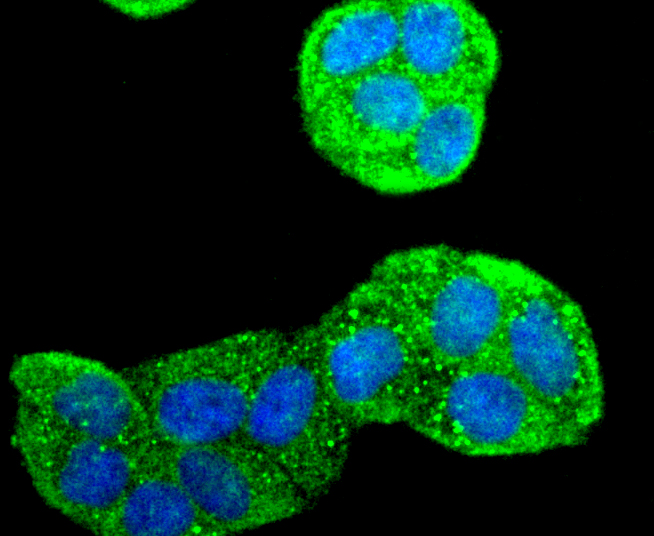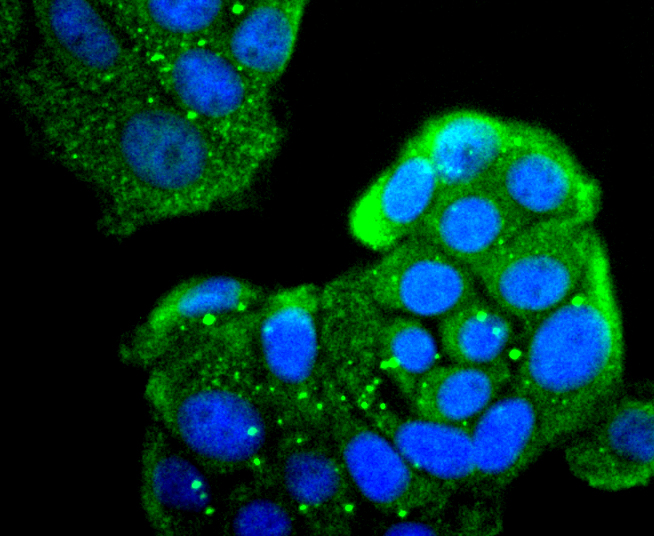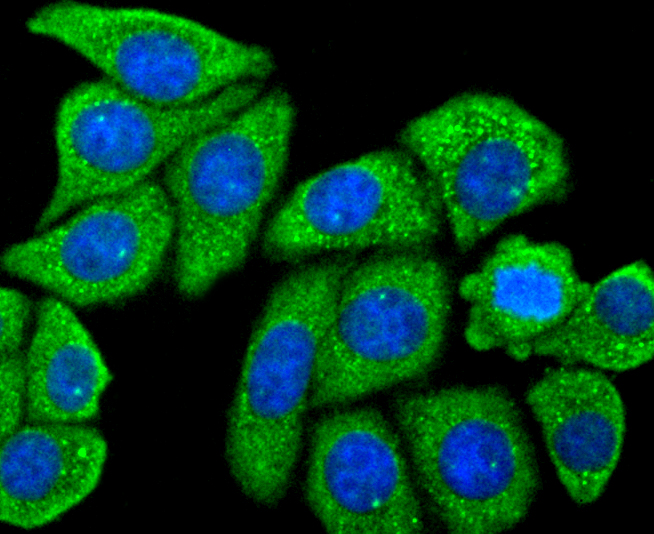Product Detail
Product NameMannose Receptor(CD206) Rabbit mAb
Clone No.JF0953
Host SpeciesRecombinant Rabbit
Clonality Monoclonal
PurificationProA affinity purified
ApplicationsWB, ICC/IF
Species ReactivityHu
Immunogen Descrecombinant protein
ConjugateUnconjugated
Other NamesbA541I19.1 antibody C type lectin domain family 13 member D antibody C-type lectin domain family 13 member D antibody CD 206 antibody CD206 antibody CD206 antigen antibody CLEC13D antibody CLEC13DL antibody Macrophage mannose receptor 1 antibody Macrophage mannose receptor 1 like protein 1 antibody Macrophage mannose receptor antibody Mannose receptor C type 1 antibody Mannose receptor C type 1 like 1 antibody MMR antibody MRC 1 antibody MRC1 antibody MRC1_HUMAN antibody MRC1L1 antibody OTTHUMP00000045206 antibody
Accession NoSwiss-Prot#:P22897
Uniprot
P22897
Gene ID
4360;
Calculated MW166/140 kDa
Formulation1*TBS (pH7.4), 1%BSA, 40%Glycerol. Preservative: 0.05% Sodium Azide.
StorageStore at -20˚C
Application Details
WB: 1:1,000-5,000
ICC: 1:100-1:500
Western blot analysis of Mannose Receptor on different lysates using anti-Mannose Receptor antibody at 1/1,000 dilution. Positive control: Lane 1: Human lung Lane 2: HepG2 Lane 3: 293T
ICC staining Mannose Receptor in Hela cells (green). The nuclear counter stain is DAPI (blue). Cells were fixed in paraformaldehyde, permeabilised with 0.25% Triton X100/PBS.
ICC staining Mannose Receptor in MCF-7 cells (green). The nuclear counter stain is DAPI (blue). Cells were fixed in paraformaldehyde, permeabilised with 0.25% Triton X100/PBS.
ICC staining Mannose Receptor in HepG2 cells (green). The nuclear counter stain is DAPI (blue). Cells were fixed in paraformaldehyde, permeabilised with 0.25% Triton X100/PBS.
CD206, also known as macrophage mannose receptor type C (MMR or MRC1), is a type I membrane receptor protein. It is an phagocytic and endocytic receptor that can recognize carbohydrate ligands in target molecules. The extracellular portion of the protein includes eight C-type carbohydrate recognition domains (CRD) which are clustered together to achieve higher affinity binding to saccharides. CD206 is found on macrophages and on endothelial cells of the liver and is the only known example of a C-type lectin that contains multiple C-type CRDs. CD206 mediates the endocytosis of glycoproteins by macrophages and binds high-mannose structures on the surface of potentially pathogenic viruses, fungi and bacteria enabling them to be neutralized by phagocytic engulfment. During inflammation, CD206 is crucial for rapid clearance of several mannose-bearing serum glycoproteins but does not regulate the initiation of inflammation. CD206 is primarily expressed in mature tissue macrophages and immature dendritic cells, as well as hepatic and lymphatic endothelial cells, retinal pigmental epithelium (RPE) and mesangial cells.
If you have published an article using product 49318, please notify us so that we can cite your literature.






 Yes
Yes



